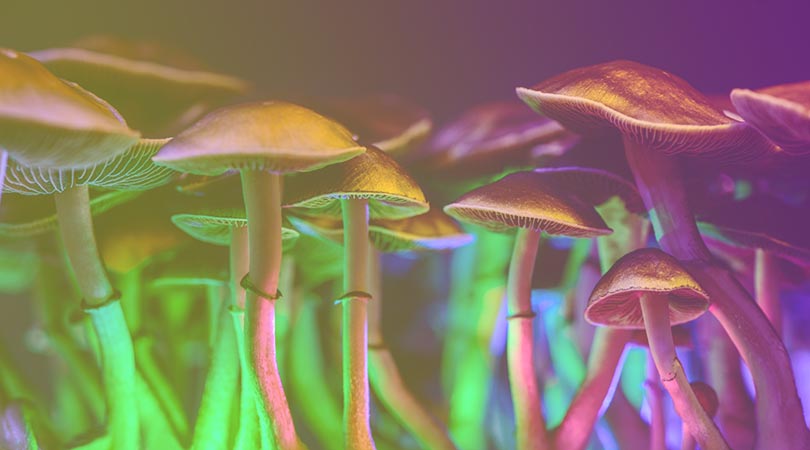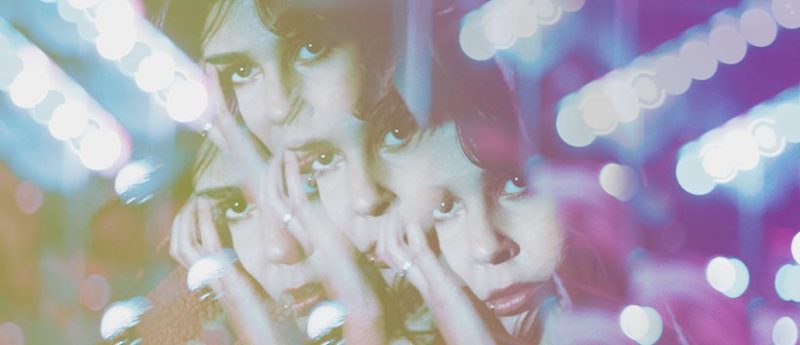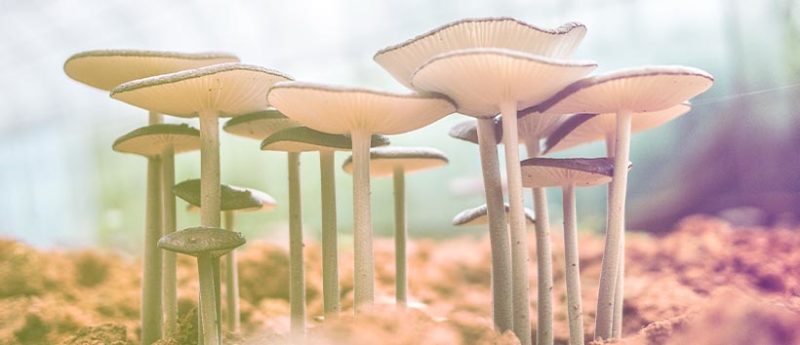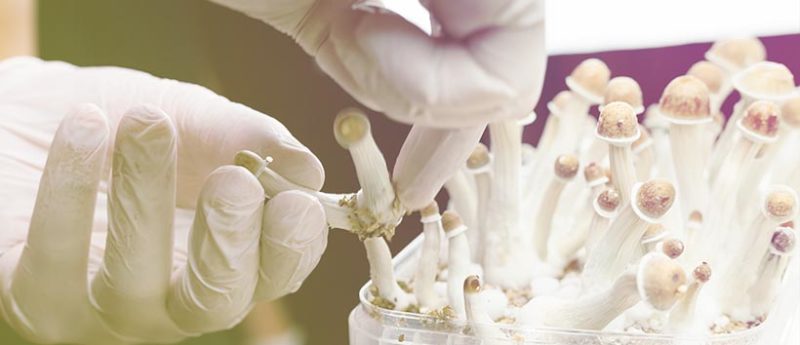Written and Fact Checked by S. Zulfiqar
Believe it or not, cannabis isn’t the only common natural substance with intoxicating properties. Magic mushrooms, otherwise known as shrooms, are natural fungi known to biologically and spiritually alter one’s mind and perception when consumed. Listed as a Schedule 1 drug and bearing strict federal regulation, there is still much to uncover behind the science of shrooms.
While the mechanics behind shrooms in our bodies remain unidentified, information of how our bodies react to shrooms and the therapeutic potential it has remains promising for scientists and researchers.
Understanding Shrooms
Growing naturally throughout the world, mushrooms, in general, tend to be widely common in Latin America and regions of Mexico. Dating back to thousands of years ago, magic shrooms have also been incorporated into traditional medicine and religious practices.
There are numerous different mushroom species that all share similar elements of psilocybin and psilocin. While these two chemical compounds are commonly found in types of shrooms, they are not necessarily present in other normal mushrooms. Besides the psychoactive elements specifically found in shrooms, these species share similar physical features such as long stems with a wide mushroom head or cap, as well as the production of spores for reproduction.
While it can be said that the psychoactive properties of shrooms are relatively similar to the intoxicating cannabinoids in cannabis, the hallucinogenic effects produced from consumption are significantly different. Tetrahydrocannabinol, otherwise known as THC, is known to stop or slow the production of new memories and actions in the body, while psilocybin does the opposite by creating more conscious reactions.
How Our Bodies React to Shrooms
The main and most popular psychoactive chemical found in shrooms is psilocybin, which promotes strong hallucinogenic effects that rank higher than cannabis and similar to other substances such as LSD. Technically, the chemical psilocybin itself is not hallucinogenic, but known as a prodrug. This means the compound itself does not produce any effects; the body, when ingesting shrooms, activates this psilocybin compound through chemical modifications in our body system.
In order to activate this compound, psilocybin is converted to psilocin, another potent psychoactive chemical that is scarcely found overall in shrooms. This conversion process that happens within our body is known as dephosphorylation. When the body removes an active phosphate group that is present in the metabolic system, the psilocybin activates and converts to psilocin. As it becomes activated, the psilocin now moves throughout the body until it has reached the brain and partially binds with serotonin receptors 5-HT2A.
While this psilocin binds to these receptors, the concept of neuroplasticity beings to happen, neurons in the brain begin to shift, reorganize, and grow. This process of neurons shifting happens so significantly within our body that some areas of the brain begin to spark and form new connections. Although there is much unknown about the transformative measures that happen when our bodies react to shrooms, the discoveries that have been made are known to alleviate symptoms of PTSD and depression.
Different Strains and Species
Compared to other drug substances, shrooms is as natural as it gets! While many cannabis growers cross-breed different strains of cannabis to produce higher concentrated THC strains, this isn’t the case for shrooms. This cross-breeding process has not been formed by shrooms perhaps due to a lack of legality and scientific research. Because of this, there are not extensive varieties and distinctions of this species, but there are different types of mushrooms that contain varying levels of psilocybin.
From what has been discovered, some of the higher concentrated psilocybin mushrooms known are named psilocybe azurescens, psilocybe bohemica, and psilocybe semilanceata. The psilocybin levels in these specific strains can contain anywhere from .5% – 1.5%.
Appearance, Smell, and Texture of Shrooms
Those who are fond of cooking or nonpsychoactive mushrooms may be familiar in the distinctive appearance of these species. While all mushroom types have a sort of top, magic mushrooms tend to have long white stems and large, golden caps.
However, unless you are growing them yourself, the shrooms you get will most likely be predried and hardened in texture compared to other regular mushroom types. They may seem shriveled in appearance, while the aroma of these dried shrooms is often pungent and musky followed by a related taste of earthiness. These qualities are especially important to look for in the shrooms because it is a clear sign of its potency, taste, and preservation.
Since they are made up of almost 90% water, shrooms must be dried out completely before consumption to prevent any mold or bacteria from harboring in the fungus.
Legality of Shrooms
As of today, psilocybin is not a legal substance under federal guidelines yet a gray area continues to emerge for its criminalization. In Canada, psilocybin shrooms are illegal to possess, obtain, or produce without a medical license. Psilocybin and psilocin are available in the country for patients seeking medical needs, specifically those terminally ill.
According to the United States Federal Government, psilocyin and psilocin are Schedule 1 drugs; this category, which also includes cannabis, states them as one of the most dangerous drug substances that exist, despite their non-toxic and non-addictive effects. Alternatively, there are many states in the country that are beginning to decriminalize the possession of psilocybin shrooms due to new scientific discoveries and their potential therapeutic benefits.
Therapeutic Shrooms
Because of the way shrooms directly react with our body, there is tons of current research suggesting that psilocybin can potentially repair neural damages in the brain. As neuron shifts occur while using psilocybin, this chemical compound may have the ability to require and produce new neural connections. Although the areas of the brain responsible for depression, addiction, and other neurological diseases continue to be studied, so does the information on how exactly psilocybin instigates this neural plasticity.
One scientist, among the many, at John Hopkins University continues to push for clinical treatments and studies that can explore the unknown questions regarding psilocybin and shrooms. For instance, one study formed involved 27 patients with depression. The research team for this study found that nearly every patient reported improved effects when treated with psilocybin compared to traditional anti-depressants. So while the textbook definition of why shrooms function the way they do in our bodies, the positive effects and outcomes has scientists hopeful for further research and treatments.
Final Thoughts
Sufficient information and research behind this species hold hope for the future of shrooms. With all of the exciting new information and research circling around the study of shrooms, it is important to consider the safety and legality of this natural substance in your area. Those interested in exploring a shroom experience should do so in a comfortable and safe environment.
Interesting Reads
How to Store Shrooms, A Beginner’s Guide to Magic Mushrooms, How to Take Psilocybin Magic Mushrooms





